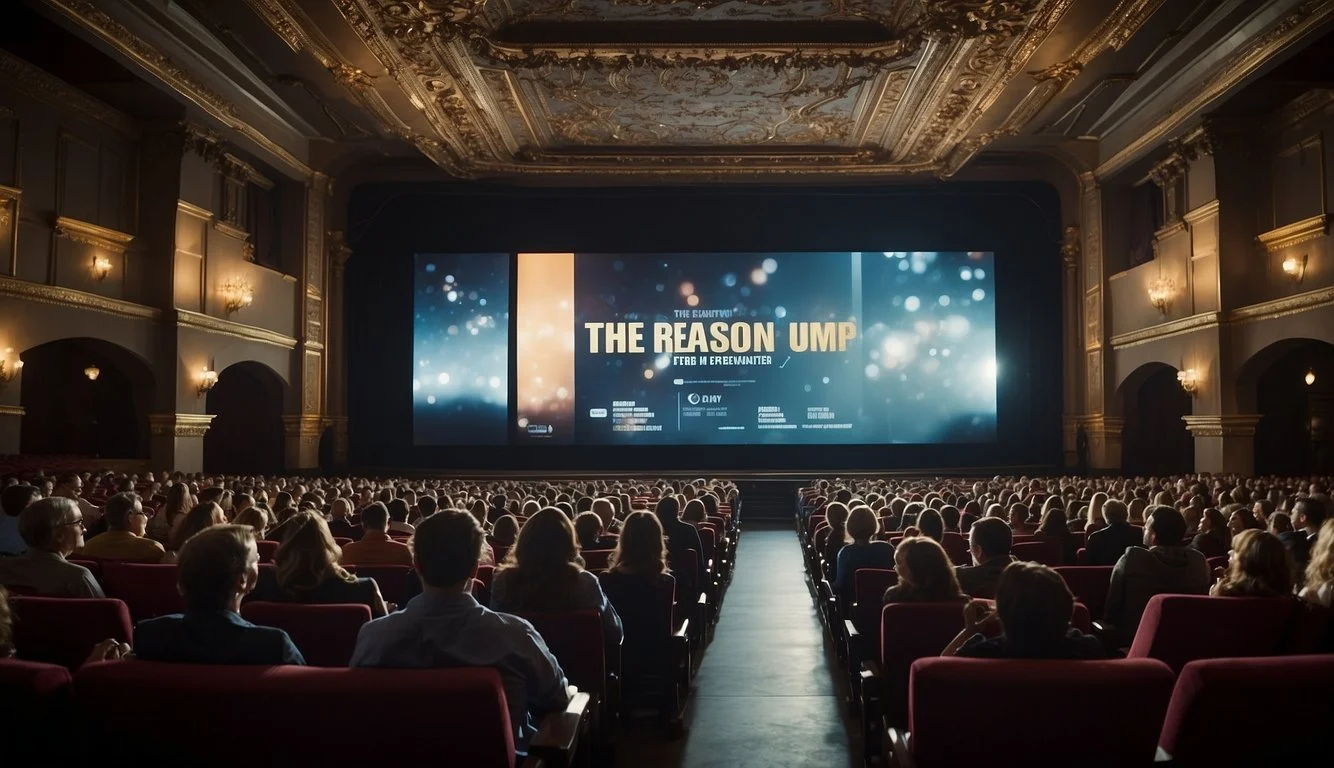Documentary Review: The Reason I Jump (2020)
Insightful Look at Autism
"The Reason I Jump" (2020) is a compelling documentary that brings Naoki Higashida's groundbreaking first-person account of living with autism to the screen in an inventive and sensuous manner. The film, directed by Jerry Rothwell, delves into the experiences of non-speaking autistic individuals, effectively visualizing and auditory illustrating their unique perspectives.
The documentary weaves together soundbite-friendly quotes from Higashida's book with the real-life experiences of five autistic children and their families. This narrative approach not only illuminates the challenges and strengths of autistic individuals but also emphasizes the power of communication and understanding in the face of adversity.
David Mitchell, one of the translators of Higashida's book, features prominently alongside the families, offering additional insights into the world of autism. This thoughtful exploration of non-speaking autistic individuals' lives underscores the importance of empathy, making "The Reason I Jump" a must-watch for anyone seeking to gain a deeper appreciation of the diverse spectrum of human experience.
Overview of 'The Reason I Jump'
"The Reason I Jump" is an inventive documentary that delves into the experiences of non-speaking autistic individuals. The film is based on a book by Naoki Higashida and incorporates a blend of personal stories and unique sensory elements.
Film Synopsis
"The Reason I Jump" explores the life of a 13-year-old Japanese boy named Naoki Higashida, who is non-speaking and autistic. Using an alphabet board designed by his mother, Higashida communicates his thoughts and feelings, offering a deeply personal view into his world.
The documentary connects Higashida's narrative with those of five other non-speaking autistic individuals around the world, highlighting their challenges and strengths. Each story is carefully interwoven with quotes from Higashida’s book, adding depth and context. The film employs innovative sound design and visual techniques to immerse viewers in the sensory experiences of the subjects.
Background and Production
The documentary is directed by Jerry Rothwell and is based on the 2007 memoir by Naoki Higashida. It was translated into English by David Mitchell and K.A. Yoshida. The film’s production involved collaborating with autistic individuals and their families to ensure authenticity and sensitivity.
To convey the sensory world of non-speaking autistic individuals, the filmmakers used a combination of visual and auditory elements, capturing the essence of Higashida's words. This approach aimed to provide viewers with a more profound emotional connection and understanding. The film premiered to critical acclaim for its empathetic storytelling and innovative presentation.
Artistic Elements
"The Reason I Jump" employs a variety of artistic elements to effectively communicate the experiences of nonspeaking autistic individuals. These elements include a compelling visual style, thoughtful editing, a poignant soundtrack, and a unique narrative structure.
Cinematography and Visual Style
The cinematography in "The Reason I Jump" is marked by its immersive and sensory-rich visuals. It uses a mix of close-ups, slow-motion shots, and vibrant color palettes to convey the intricate sensory worlds of its subjects. The use of natural light is particularly notable, as it adds a layer of realism and accessibility to the documentary.
Editing Techniques
The editing techniques play a crucial role in conveying the fragmented and non-linear experiences of autism. Quick cuts, overlapping scenes, and the interweaving of different storylines mimic the thought processes and perceptions of the subjects. This editing style helps the audience to gain a visceral understanding of the sensory overloads and emotional complexities involved.
Soundtrack and Audio Effects
Sound design in "The Reason I Jump" is instrumental in creating an immersive experience. The soundtrack includes both ambient sounds and carefully chosen musical tracks to evoke emotions. Audio effects like heightened ambient noise and layers of sound textures represent the sensory sensitivities of the subjects, making the audience feel a part of their world.
Narrative Structure
The narrative structure of the documentary is non-traditional and mirrors the unique ways autistic individuals might experience the world. It intertwines multiple personal stories while anchoring them around the writings of Naoki Higashida. This approach not only provides varied perspectives but also underscores the universal themes of the film, such as connection, empathy, and understanding.
Themes and Messages
The Reason I Jump delves deep into the world of autism, focusing on three core themes: exploration of autism, communication and perception, and empathy and understanding. Each theme offers unique insights into the experiences of individuals with autism and how they connect with the world and people around them.
Exploration of Autism
The documentary provides a window into the day-to-day lives of five nonverbal autistic individuals. It highlights their unique experiences and challenges, focusing on their sensory perceptions and how they interact with their environment. By examining these personal stories, the film seeks to dispel common misconceptions about autism, emphasizing that it is a spectrum with a wide range of behaviors and abilities.
Communication and Perception
One of the film's central themes is the varied ways in which autistic individuals communicate and perceive the world. The documentary underscores the importance of alternative communication methods, such as art and technology, for nonverbal individuals. For instance, Amrit from India uses painting as a means to express her thoughts and emotions. This theme emphasizes the need for society to recognize and support these alternative forms of communication.
Empathy and Understanding
The documentary also emphasizes empathy and understanding, urging viewers to see the world through the eyes of those with autism. By including personal narratives and experiences, it fosters a deeper connection between the audience and the subjects. The narrative aims to break down barriers and promote a more inclusive society where the experiences and voices of autistic individuals are valued and understood.
Critical Reception
"The Reason I Jump" received attention from both professional critics and general audiences. Examining the reviews provides insight into how different viewers perceived the documentary’s portrayal of autism.
Professional Critiques
Professional critics have largely praised "The Reason I Jump" for its inventive approach to portraying autism. Variety highlighted the documentary for its sensuous and imaginative style, stating that it adeptly translates Naoki Higashida’s book into a visual experience.
IndieWire commended the film for its humane depiction of nonspeaking autistic individuals, emphasizing the use of an alphabet board to convey communication breakthroughs. Roger Ebert's review focused on the documentary's use of Higashida’s quotes to connect various narratives, noting the thoughtful integration of soundbites to enhance storytelling.
Audience Response
General audiences have also responded favorably to "The Reason I Jump". Rotten Tomatoes features numerous positive ratings, with an overall high score of 4.5 out of 5 stars.
Many viewers found the film to be a poignant and insightful depiction of autism, remarking on its emotional resonance and educational value. Specific audience reviews include one dubbing it a "fantastic film for hubby and wife date night," underscoring the documentary’s broad appeal and impact.
Overall, audiences appreciated the unique storytelling approach and felt it provided a deeper empathy toward autistic experiences.
Final Thoughts
The Reason I Jump offers a profound glimpse into the world of nonspeaking autistic individuals. Through the lens of the documentary, the audience gains insights into their unique ways of experiencing and interacting with the world.
The film beautifully captures the essence of Higashida Naoki’s thoughts and pairs them with the real-life narratives of other autistic individuals and their families. This combination creates a rich tapestry of experiences that shed light on the daily lives and challenges faced by these individuals.
Visually, the documentary employs stunning cinematography, enhancing the viewer's connection to the subjects. The use of immersive audio elements further deepens this connection, allowing the audience to experience sensory elements similar to those felt by nonspeaking autistic individuals.
The stories of the five autistic children featured in the film resonate deeply. Their personal journeys highlight both the struggles and triumphs of living with autism. These heartfelt narratives offer viewers an opportunity to develop empathy and a better understanding of their lives.
Ratings:
Rotten Tomatoes: 4.5/5 Stars
Variety: Positive reception
Roger Ebert: Commendable use of soundbite-friendly quotes
The collaborative efforts of the filmmakers, including the contributions from David Mitchell and K.A. Yoshida, significantly enhance the film’s authenticity and emotional impact. By staying true to Higashida’s messages and experiences, they ensure a respectful and accurate portrayal.
The Reason I Jump stands out as a significant documentary. It not only educates but also fosters meaningful reflection on autism and communication.




